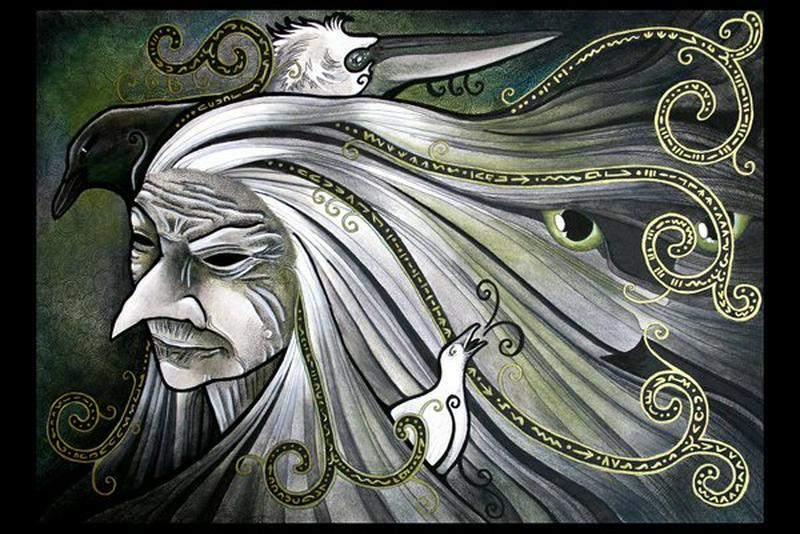Legendary Grannies: Hags in Celtic Myths
By | March 31, 2019

You may picture Celtic goddesses as beautiful, young women with flowing red hair, but some of the most powerful goddesses in Scottish and Irish lore are hags. In fact, hags feature prominently in myths and stories of the British Isles. The hag is a complex character. On one hand, hags are healers who are especially useful to women during childbirth. But on the other hand, hags can be fearsome destroyers of life, as well. Let’s look at the role of the hag in Celtic mythology.

Hags are Old and Ugly
According to Celtic folklore, hags are old woman. They appear to be frail and decrepit but are really quite strong and spry when they need to be. Hags have long white or gray hair and wear rough woolen cloaks. Most myths claim the hag was the mother of all the other gods and goddesses.

Hags are Powerful
Hags are among the more powerful deities in Celtic mythology. They are wise and cunning. They can command the elements—earth, wind, water, and fire—and control the weather. In the Spring, they sometimes bring destructive thunder and wind storms if they are angered. They can bring tremendous cold and snow in the Winter. The ground would instantly freeze with just tap of a hag’s walking stick. Wildfires, hail storms, and flooding are said to be the works of hags.

Hags Cause Sleep Paralysis
According to the stories, hags are responsible for the frightening condition now knows as sleep paralysis. Late in the night, a hag will creep into the home of an unsuspecting victim. She would sit on his or her chest and send terrifying nightmares to their brain. If the victim woke during the encounter, he or she would be alert but unable to move. In ancient times, this condition as called “hagridden”.

Hags Created Mountains
Scottish legends state that many of the mountains and hills of the country were created by hags. In some of the stories, the hags accidentally dropped rocks from their baskets. Every rock that fell grew into a mountain. Other stories claim that hags sculpted the mountains and valleys to use as steps. Despite their frail look, hags often carried hammers with them.

Hags Represented Fear of Women
Men in antiquities were suspicious and fearful of women in general. Women bled without being cut. They brought forth new life. Women tempted men with their beauty. They were careful to keep women in a subservient role so they couldn’t rise to be equal to men. The myths and stories about hags and the evil activities that they have been accused of doing were perpetuated as a means of keeping suspicion on women.

Hags were Associated with Barrenness
Hags in Celtic mythology was connected to barrenness. Plots of land that were devoid of vegetation were said to be so because a hag walked there. Being barren was a dreadful affliction for women in antiquity. A woman’s lot in life was to provide her husband with heirs so an infertile woman was valueless, just as barren land is worthless. As women age, they lose their fertility. A hag, as an old woman, was beyond her childbearing years and barren.

The Hag was a Magical Transformer
A theme in many of the Celtic myths about hags was that the hag could change. A hero who wanted to defeat or overcome a hag had to win her over by accepting her age, abrasive personality, and hideous appearance. Once he loved her unconditionally, the hag’s ugliness would often melt away to reveal a beautiful, young woman who relinquished her wicked ways to become obedient to her man.

Hags in Folklore
The Celtic people celebrated a holiday called La Fheill Brighde on February 1. According to the story, February 1 was the day that an old hag would rouse herself from her winter shack to stock up on firewood to last the rest of the winter. If the weather was pleasant on February 1, the hag could gather lots of firewood that would last a long time, meaning that spring was far off. However, if the weather on February 1 was snowy, stormy, and cold, the hag wouldn’t be able to gather as much wood, so winter would end sooner. People in Ireland and Scotland still hope for bad weather on February 1, for it means an early spring.

